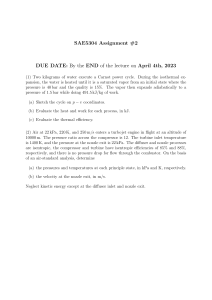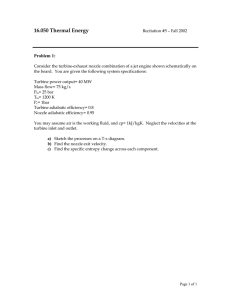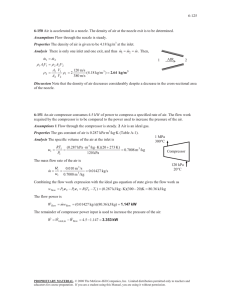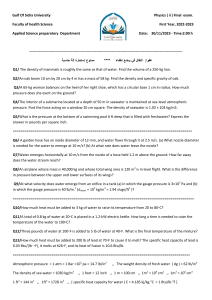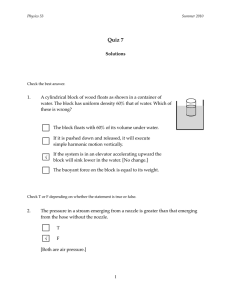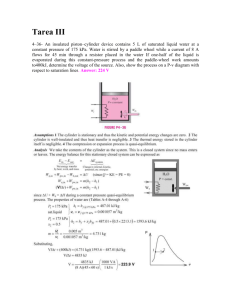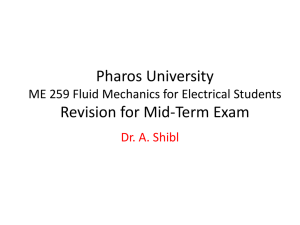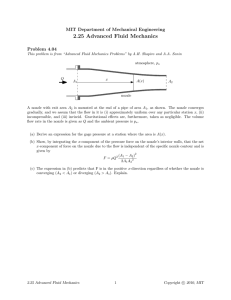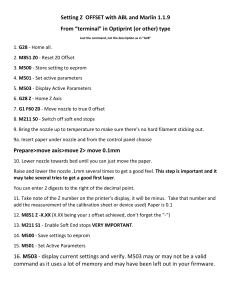Introduction Motivation Fundamental goal of Turbomachine – Conversion of Kinetic Energy to... Examples of Modern Engines
advertisement
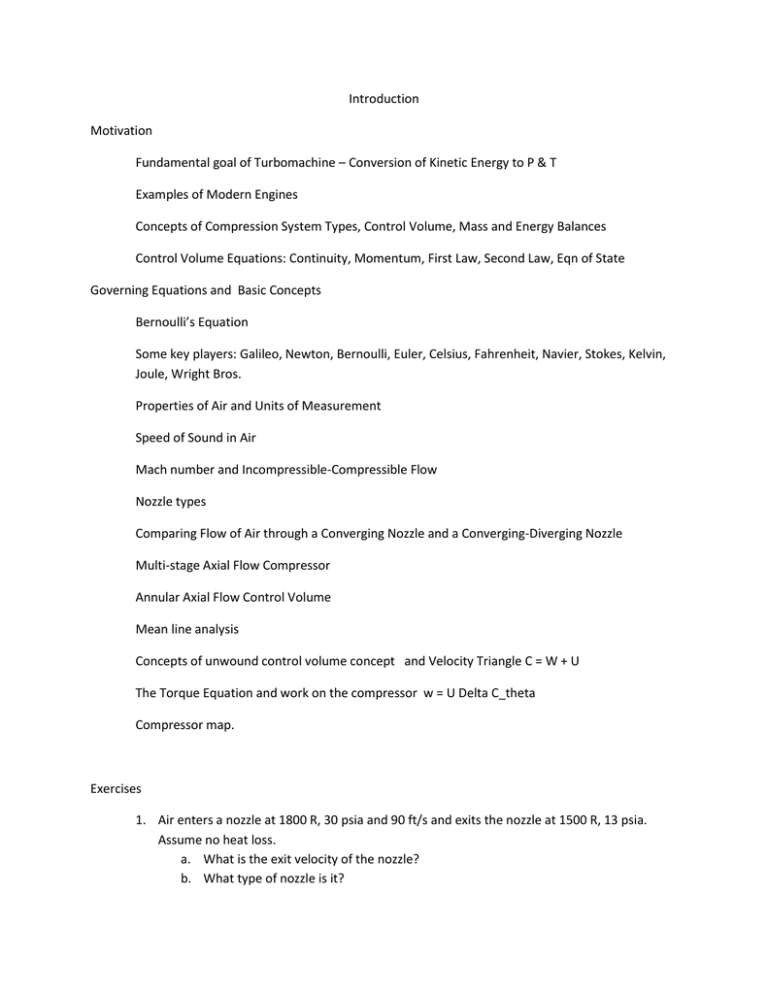
Introduction Motivation Fundamental goal of Turbomachine – Conversion of Kinetic Energy to P & T Examples of Modern Engines Concepts of Compression System Types, Control Volume, Mass and Energy Balances Control Volume Equations: Continuity, Momentum, First Law, Second Law, Eqn of State Governing Equations and Basic Concepts Bernoulli’s Equation Some key players: Galileo, Newton, Bernoulli, Euler, Celsius, Fahrenheit, Navier, Stokes, Kelvin, Joule, Wright Bros. Properties of Air and Units of Measurement Speed of Sound in Air Mach number and Incompressible-Compressible Flow Nozzle types Comparing Flow of Air through a Converging Nozzle and a Converging-Diverging Nozzle Multi-stage Axial Flow Compressor Annular Axial Flow Control Volume Mean line analysis Concepts of unwound control volume concept and Velocity Triangle C = W + U The Torque Equation and work on the compressor w = U Delta C_theta Compressor map. Exercises 1. Air enters a nozzle at 1800 R, 30 psia and 90 ft/s and exits the nozzle at 1500 R, 13 psia. Assume no heat loss. a. What is the exit velocity of the nozzle? b. What type of nozzle is it? 2. 3. 4. 5. 6. Conversion Factor: 778 lb_f ft/BTU = g_c C_p(air-std) = 0.24 BTU/lb_m R) Air enters a diffuser at Pi=14.7 psia, Ti=540 R, at vi=600 ft/s. Ai =0.2 in^2, Ae=1.75 in^2, ve=60 ft/s. Determine Pe, Te. Air flows into a turbojet at vi=60 ft/s, Ti=480 R, m=10 lb_m/s and flows out at ve=1500 ft/s, Te=1440 R, pe=11psia. Air flows into an engine Ti=1000 K, pi=200kPa, vi=40 m/s and exits at ve=500 m/s, pe=90 kPa. What is the exit temperature with no losses? Front of engine acts as diffuser, vi=900 km/hr, Ti=-5 C, pi = 50 kPa, bringing it to 80 m/s relative to the engine before entering the fan. If the flow area is reduced to 80% of the inlet area, find T, p at the fan inlet. In an aircraft engine at takeoff, combustion products expand adiabatically in the exhaust nozzle. Pi = 0.18 MPa, Ti= 1200 K. Cp = 0.959+1.16e-4 T + 3.65e-8 T^2 kJ/kg K. M=30 g/mol. Assume the incoming kinetic energy is much smaller than the outgoing. Show how v and p depend on T for T=900, 1000, 1100 K. Determine also the speed of sound at each T and the required nozzle types.
